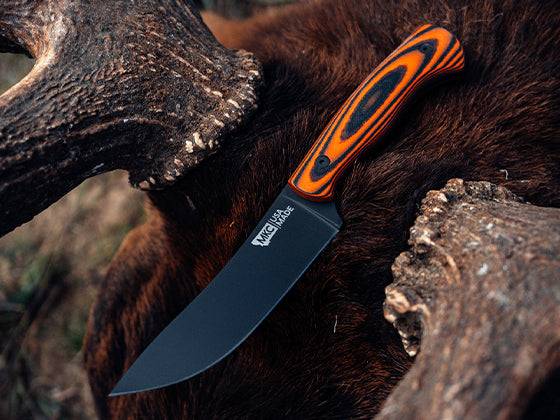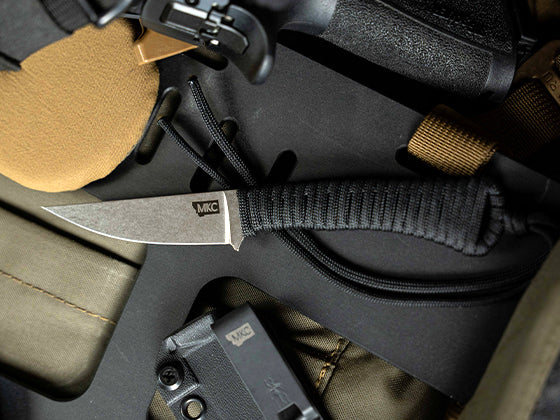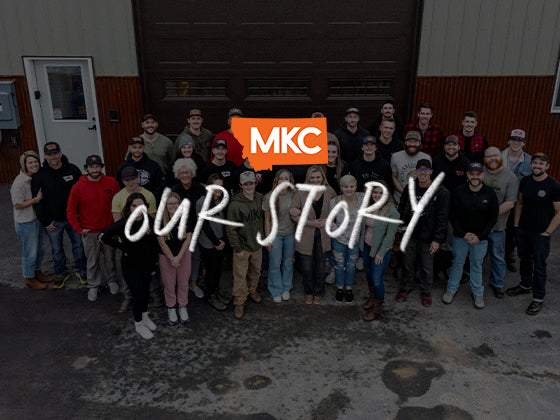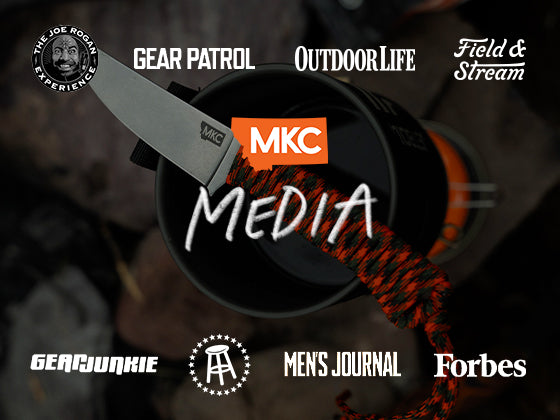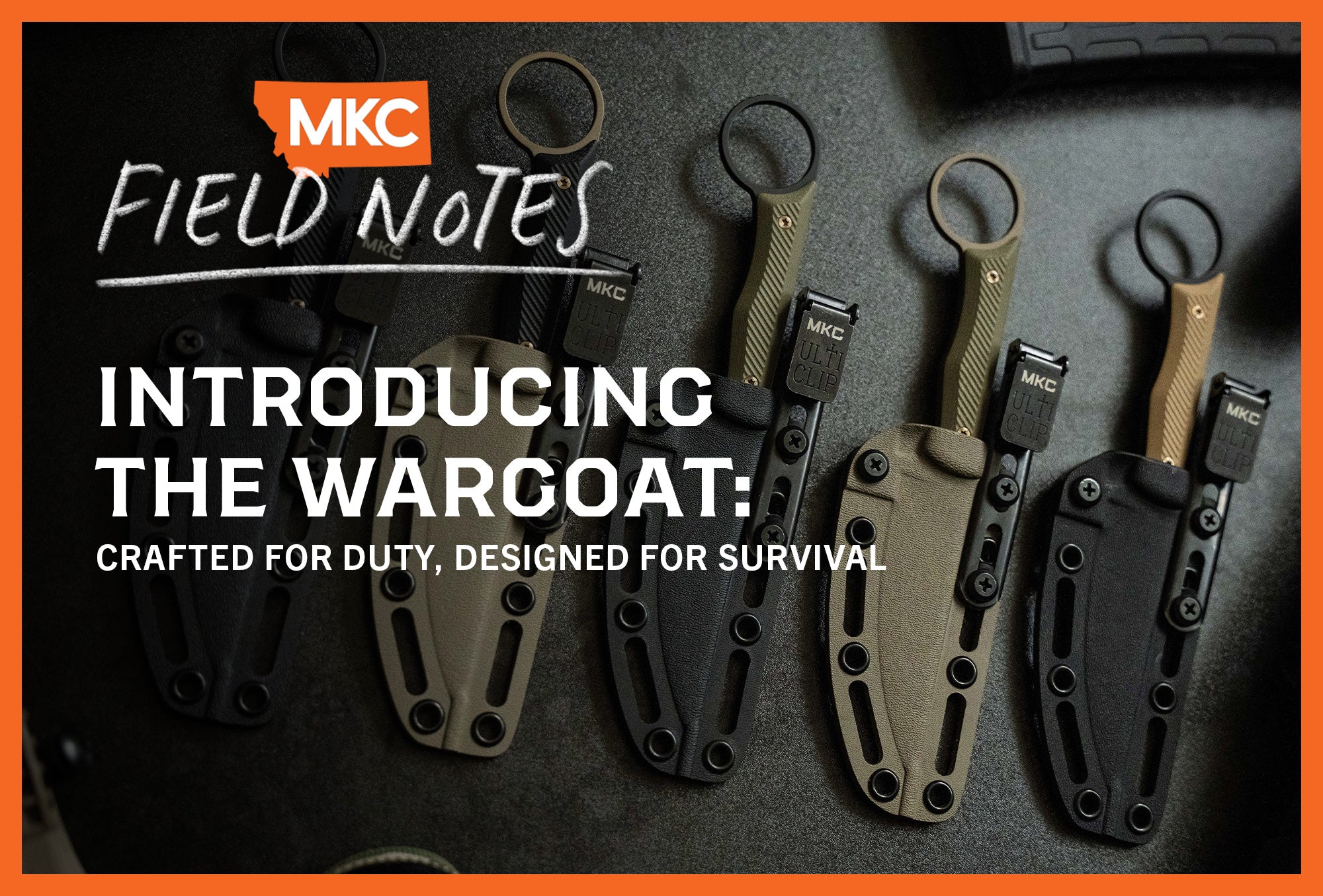Forged vs. stamped knives: which is better? This debate began long before I started making knives.
The short answer is that it comes down to the individual blade. Heat treatment, steel makeup, and knife manufacturer matter just as much as the production method. Even within a single company, some blades are excellent while others are subpar.
Most people assume handmade (or, in this case, hand-forged) items are of higher quality. As a result, people usually consider forged knives to be better, regardless of whether they’re truly choosing the best knife for what they need.
Just because an item is handmade doesn’t mean it’s of higher quality than the alternative. Take jewelry, for example. Even a factory-made necklace will turn out better than one made by an amateur. The same is true of knives.
So, should you buy a forged or a stamped knife? Let’s explore each method’s pros and cons.
What Are Forged Knives?
A knife maker creates a forged blade by manipulating a piece of steel. The knife maker heats the steel until it’s red hot, then pounds it into shape.
Forging is the most efficient knife-making style. It reduces waste since you’re stretching and manipulating one piece of steel rather than grinding or cutting away excess. That’s partly why ancient craftsmen forged so many tools — they needed to make the most of the material they had.
Forging also allows you to make unconventional shapes. If you want to make an integral knife with an integral guard, for example, forging is the best way to do it.
Many forged knives, especially kitchen knives, feature a “bolster” near the handle. This steel extension balances heavy blades and makes them easier to use. Many forged blades also feature a full tang, which balances the blade’s heavy end.
Damascus steel is a unique steel type that can only be forged. Artisans create Damascus steel knives by folding layers of steel over and over. By folding multiple types of steel, the knife maker creates a resilient blade with a unique etched design.
Damascus steel is highly desirable among consumers, but because it’s so labor-intensive, it can have a high price tag.
Forged Knives: Pros and Cons
Forged blades are enticing because of the way they make us feel.
A forged blade feels like it has a heart and soul. When I hold a forged blade, I know the maker put his blood, sweat, and tears into it. A good, hand-forged, American-made blade feels more nostalgic than a blade a machine stamped out.
However, forging demands a lot of experience. It’s tough for a novice bladesmith to forge a high-quality knife. Inexperienced forgers can damage the steel by overheating or underheating it. Hammering the steel while it’s too cold can create microcracks in its structure.
Forging requires a lot of equipment and is hard, physical work. Bladesmiths often prefer stock removal because it’s easier on the body. (We’ll get to that soon.)
Forged blades can be heavy, bulky, and unwieldy. The more skilled the craftsman, the more precise the result. Forging blades is as much an art form as it is a profession.
Finally, the forging process can be long and arduous. High-quality, hand-forged knives can be expensive because of the required time and labor investment. Plus, advances in stamping technology mean forged knives aren’t always better than their counterparts.

What Are Stamped Knives and Stock Removal Knives?
Knife makers create the initial shape of a stamped knife using a die shaped like the blade. A fine blanking machine then stamps out the blade in a single, accurate motion. The knife maker tempers the blade to increase its hardness, then hones and sharpens the edge.
Next, you have stock removal knives. Stock removal means cutting or grinding a blade shape from a piece of flat steel. Instead of using a die or fineblank to stamp out the knife shape, the knife maker removes material bit by bit until they’re happy with the result.
Individual knife makers typically use stock removal methods instead of fineblanking. While fineblanking machines can mass-produce knives, they may not be as good as handmade knives. These machines also have an incredibly high cost of entry.

Stamped Knives: Pros and Cons
Fineblanking, or stamping, is quick and efficient. It requires little to no labor and provides consistent results, minimizing human error.
A stamped blade is thinner than a forged blade, so it tends to be lighter and more flexible. Lighter knives prevent fatigue and work better for delicate filleting and slicing jobs.
Fineblanking offers limited thickness and material options since the pressing action can stress the steel. Fineblanking is also very costly and next to impossible for small shops. It’s typically only feasible for large-scale knife manufacturers.
Some people believe stamped knives don’t hold their edge as well as forged blades. While this may be true sometimes, fineblanking technology has come a long way in recent years. Plus, that same lack of durability gives you a blade that may be easier to sharpen.
Finally, while it’s not measurable, the lack of human involvement in the fineblanking process makes for a less nostalgic blade. Some people may overlook that in exchange for the lower price.
Stock Removal Knives: Pros and Cons
While fineblanking and forging might be too advanced or costly for some bladesmiths, stock removal is easy to learn and execute. Even an amateur can grind a blade into the correct shape with a little practice.
The stock removal process starts with a light, flat piece of steel. In comparison, forging starts with large, heavy blocks or ball bearings. Stamped knives start with the same flat steel as stock removal knives.
Stock removal also allows for a wider material selection, so the steel is less likely to overheat or develop stress cracks.
Of course, stock removal has downsides. The initial stock selection can be limiting. You need to start with a piece of steel large and thin enough for the knife blank you’re making. Unlike forging, you can’t stretch your material to your desired shape and size. As such, there’s less room for error during the grinding and shaping process.
Stock removal is also a dirty process that requires more equipment than forging or stamping. At minimum, a grinder and a belt sander are essential, as are tools to temper and hone the resulting blade.

How Does MKC’s Process Compare?
So, how are MKC’s knives different from forged or stamped knives?
Here at MKC, we laser our blades, which is a combination of fineblanking and stock removal. Lasering allows for repeatable, high-quality results. Our laser also creates thinner, lighter blades than any machine can fineblank.
Our meticulous lasering means there’s no limit to what type of steel we can use. Plus, lasering has little impact on the steel, so there’s no risk of damage or overheating.
We use lasers to cut, machines to grind, and our hands to assemble and hand-sharpen every blade. Our process combines precise production with delicate hands-on work.
Our hybrid process won’t satisfy everyone, especially if they want a totally handmade blade. However, I think it’s the ideal combination of efficiency and accuracy. It makes the most of the manufacturing process but adds hand-finishing as the cherry on top.
Forged vs. Stamped Knives: Final Thoughts
Very few people make knives entirely by hand today. Some knife makers craft forged knives with machines instead of a traditional hammer and anvil, with just as excellent results. Some artisans use simple stock removal methods to make blades that are better than forged ones.
What truly matters is the blade’s quality, the makeup of its steel, the durability of the final finish, and the heart and soul put into it. More important than that, though, are the memories you make with it.
Forging, stamping, and stock removal all have unique pros and cons. Ultimately, MKC’s hybrid process is the best way to put great knives into customers’ hands. There’s simply no other way to meet the enormous demand for high-quality, American-made blades.
by Josh Smith, Master Bladesmith and Founder of Montana Knife Company
























